
The Dragonflies
in the Ostfalen Technology Park
There are several bodies of water in the Technology Park, which are important as habitat for a variety of animal and plant species. To get an overview of the species, an inventory of the dragonflies was carried out in 2019 with the financial support of LOTTO Sachsen-Anhalt. Between mid-April and mid-September, various sections of the Kleine Sülze and the Telzgraben (flowing waters), as well as of the quarry lake and smaller meadow pools (still waters) were examined weekly. In total, 30 different species of dragonfly could be detected in the project area, including some species that are rare in Saxony-Anhalt.
Dragonflies spend most of their lives, unnoticed by us, as larvae in the water. There they live protected from predators in the soil mud buried or well hidden between aquatic plants, where they hunt for other microorganisms. The flight times of the sexually mature animals vary in length depending on the species and are used exclusively for mating and egg laying to ensure the survival of the species. During this phase of life, in particular, the colorful males can be well observed on sunny shores, where they patrol for hours looking for females and defend their territories against competitors. In order to meet their high energy requirements, dragonflies rely on heat-favored and structurally rich biotopes in the vicinity of the waters in which they can hunt other insects.
A large part of the dragonflies native to the technology park populates the quarry lake in the northeastern part of the park, which is used by park visitors and their dogs as a bathing lake during the summer months.
On the other hand, species that colonize slow flowing streams and ditches occur mainly along the Kleine Sülze and Telzgraben creeks. Other species, on the other hand, prefer shallow pools where the water is quickly heated by the sun.
The full project report can be requested from NABU Barleben.
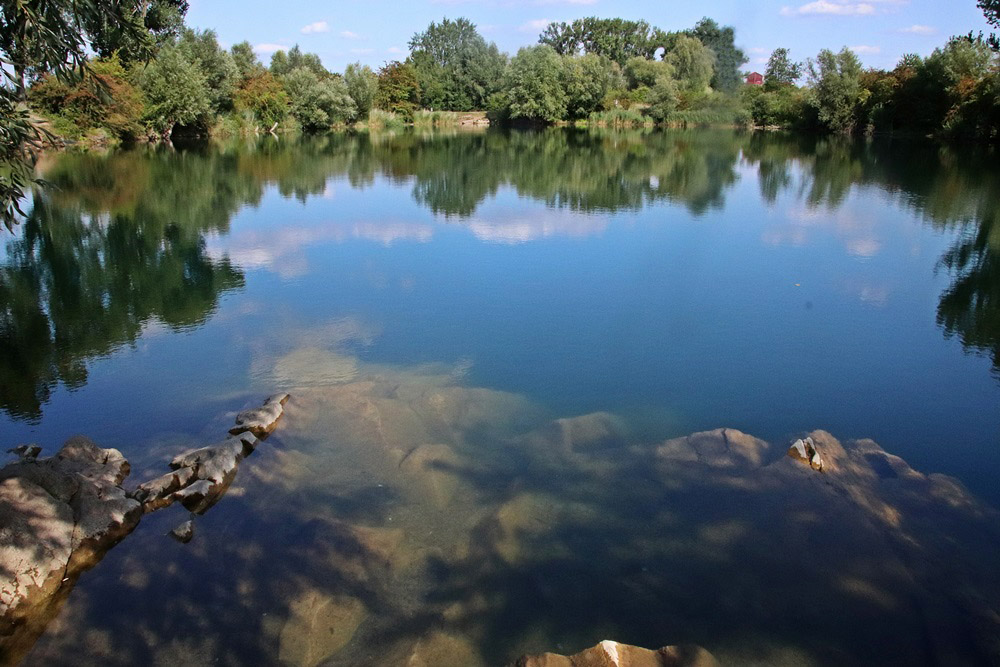
The recreational use of the quarry lake, there are many open riparian zones, but also for dragonflies significant areas of bank shrubs, dense reed belts, deadwood and a diverse underwater vegetation.
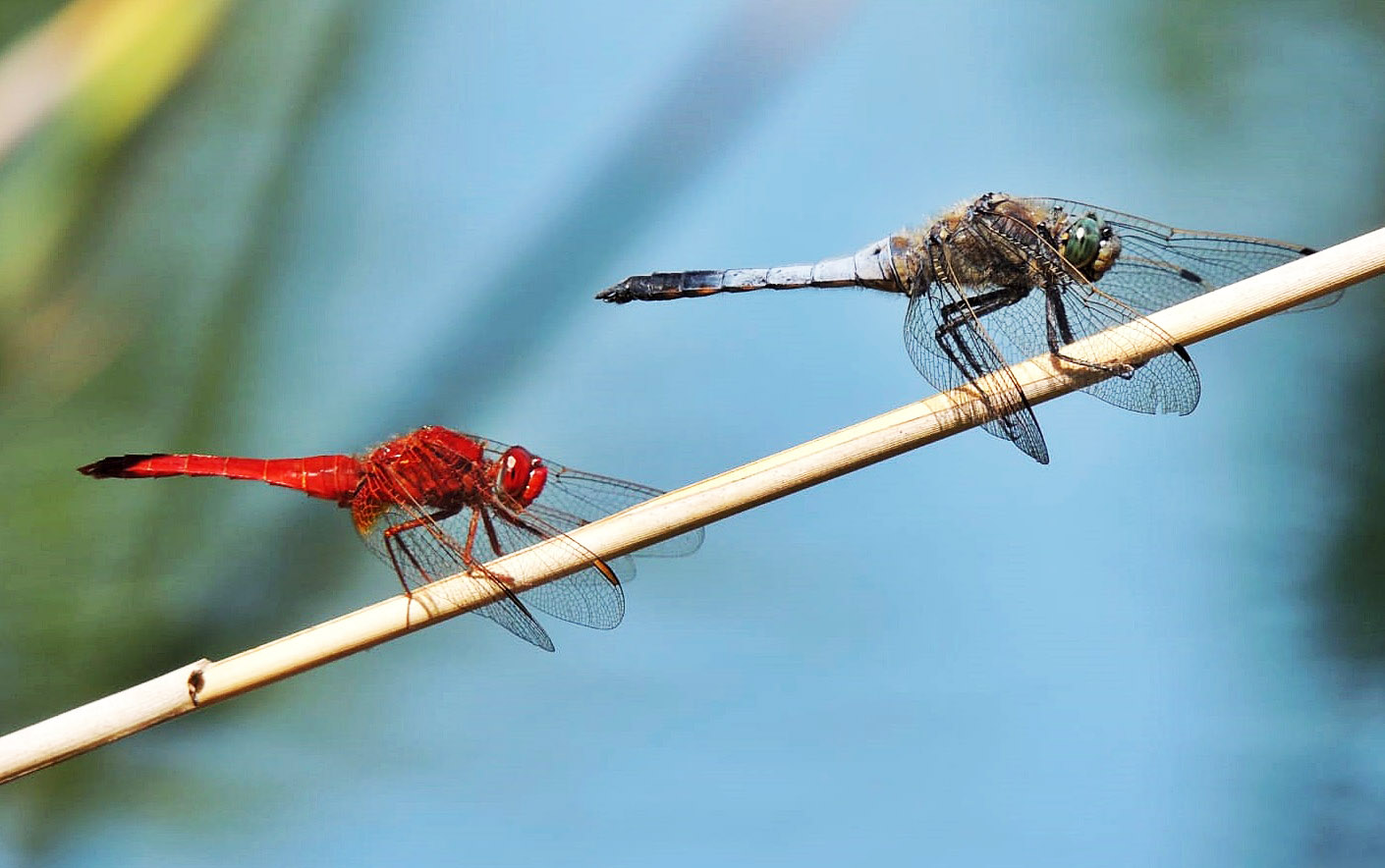 On the reed-covered riparian zones of the quarry lake, representatives of the skimmers especially often sit on dried branches and plant stalks with a view towards the water surface. The Common Scarlet Darter (Crocothemis erythraea, left) is native to Africa. It is one of the winners of global warming and is now frequently found in our latitudes. The heat-loving Black-Tailed Skimmer (Orthetrum cancellatum, right) benefits from the open bathing sites on the northern shore of the quarry lake, where they often sit on the sandy soils to warm up.
On the reed-covered riparian zones of the quarry lake, representatives of the skimmers especially often sit on dried branches and plant stalks with a view towards the water surface. The Common Scarlet Darter (Crocothemis erythraea, left) is native to Africa. It is one of the winners of global warming and is now frequently found in our latitudes. The heat-loving Black-Tailed Skimmer (Orthetrum cancellatum, right) benefits from the open bathing sites on the northern shore of the quarry lake, where they often sit on the sandy soils to warm up.
Photo: Gertraud Rehberg
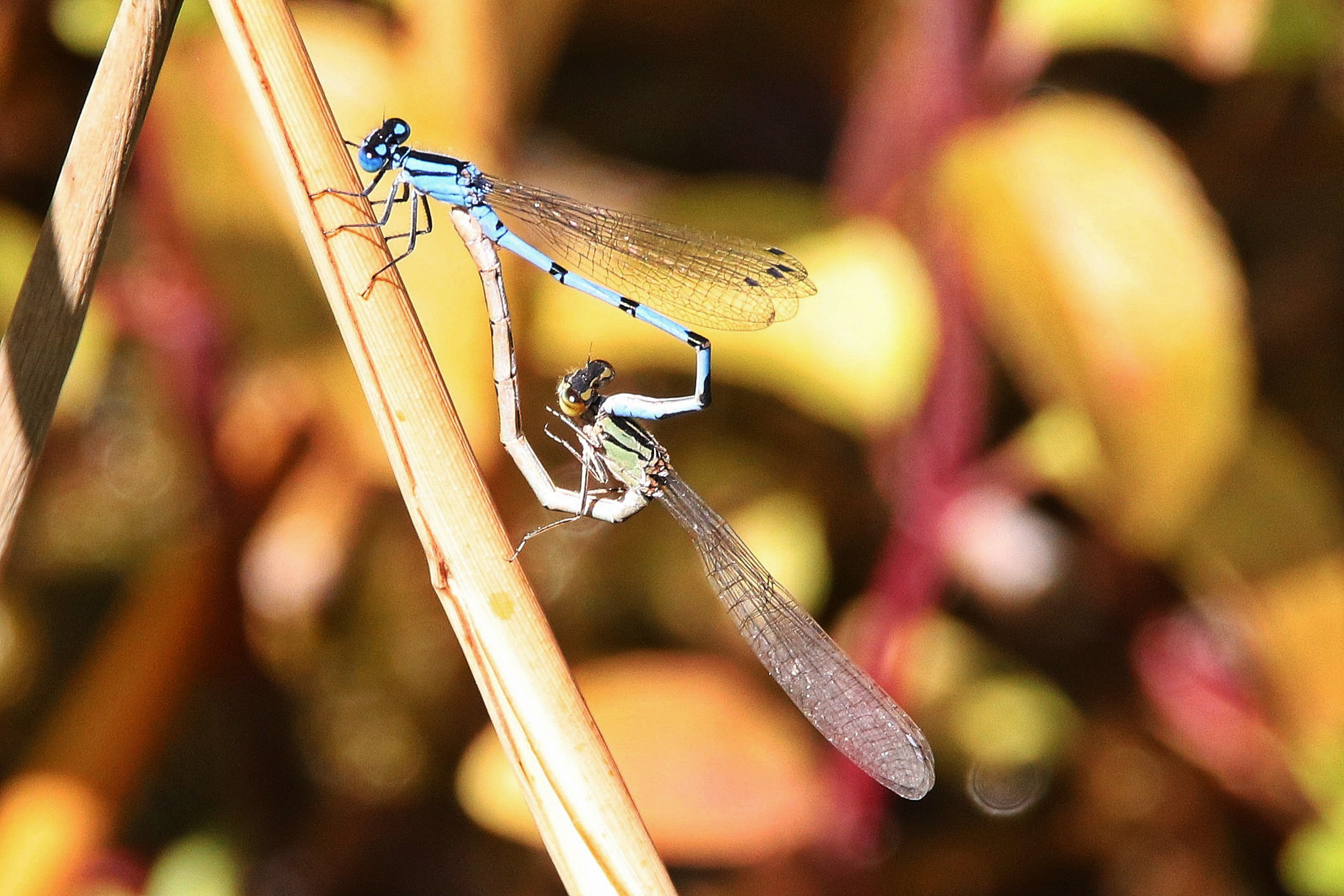
Common Blue Damselflies (Enallagma cyathigerum) colonize stagnant waters with large open water areas and are found in the TPO particularly numerous within the sunny vegetation structures on the eastern shore of the quarry.
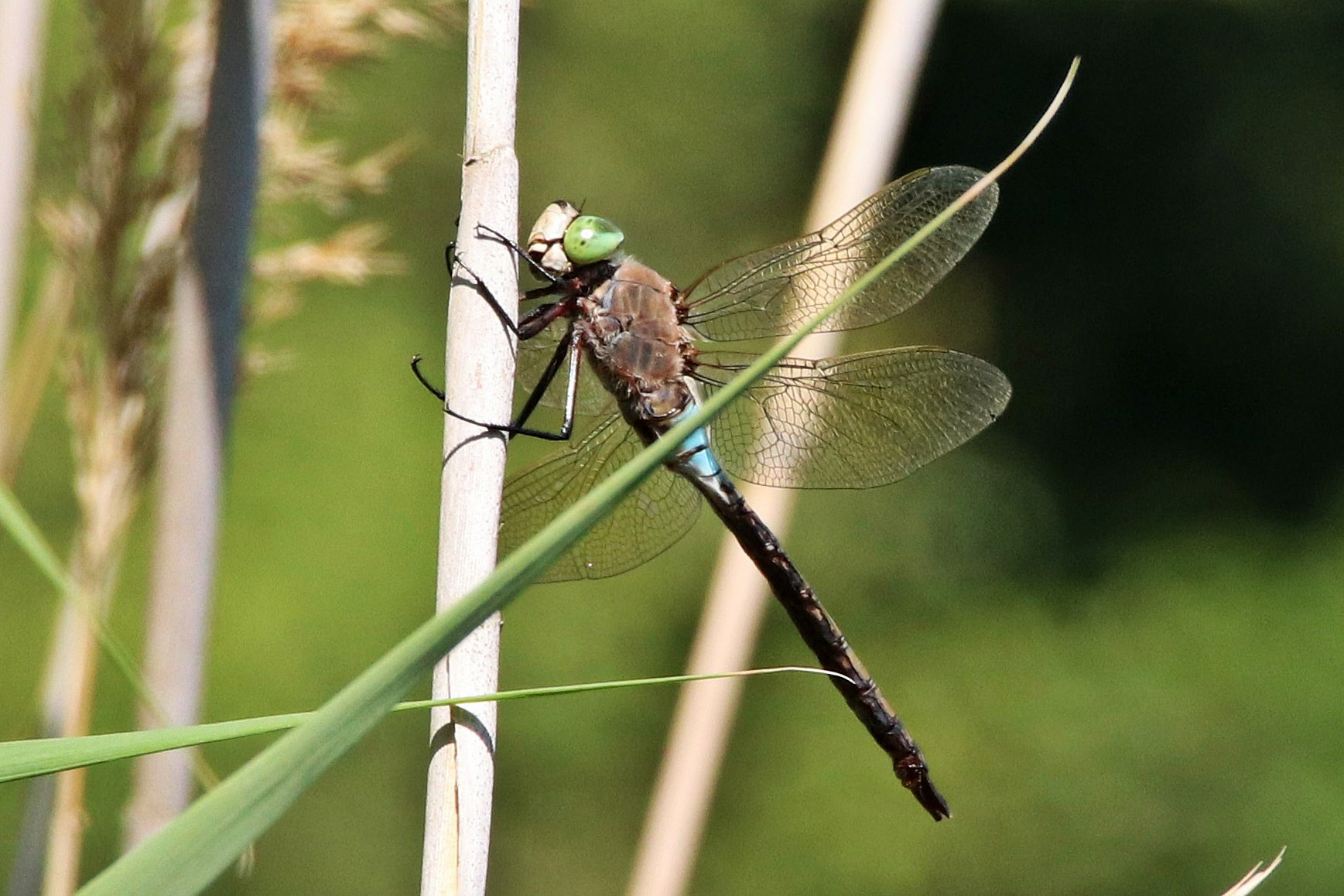
Lesser Emperors (Anax parthenope) live up to their name at the quarry lake. Tirelessly, the imposing animals circle the open water during the summer months and vehemently defend their "empire" against other dragonflies.
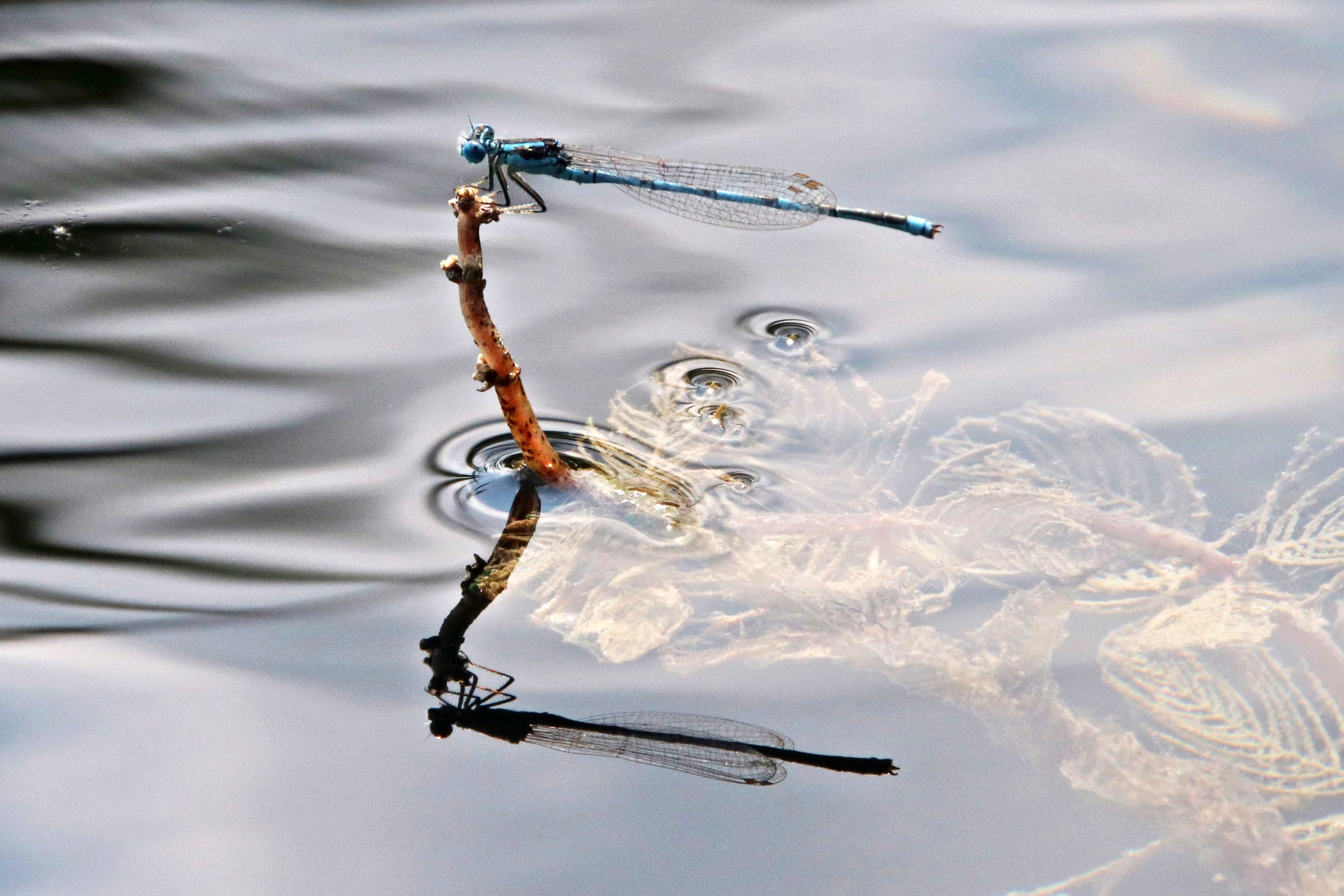
The Goblet-marked damselfly (Erythromma lindenii), also called "sapphire eye" because of its blue eyes, is very rare. By 2016, only 5 other sites were known throughout Saxony-Anhalt (MÜLLER et al.2018). At the quarry lake, the species' requirements for clear, oxygen-rich water with emerging underwater vegetation are met, which has enabled the development of an individual-rich population.
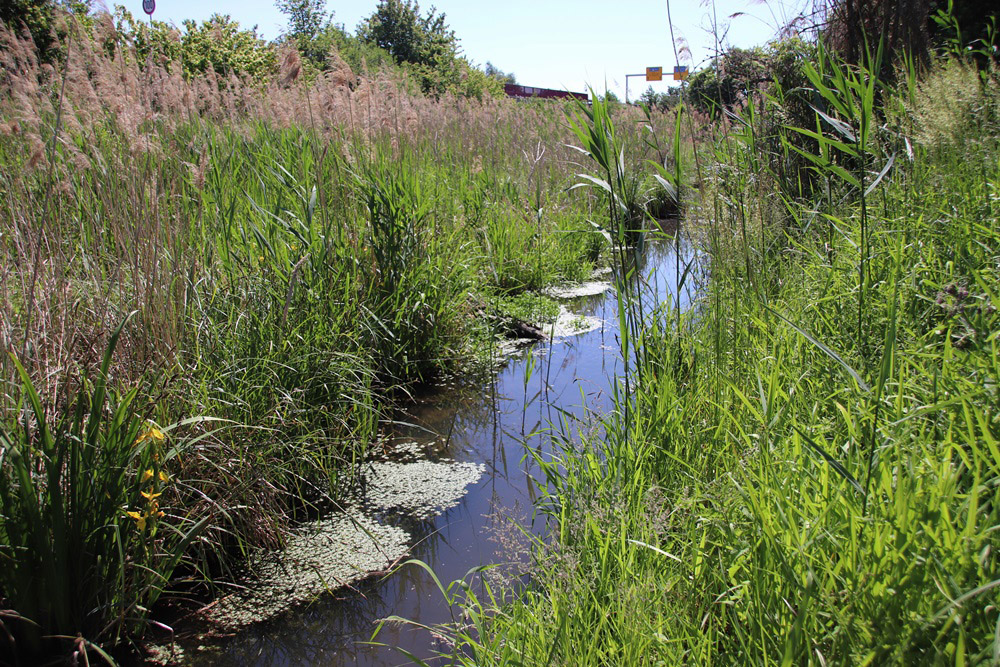
The "Kleine Sülze" creek south of the reservoir of the beaver in the area next to the B189. Such open and sunny sections of water are populated by various sometimes rare dragonfly species. Of importance is the diverse underwater vegetation in which dragonfly larvae can develop protected from predators.
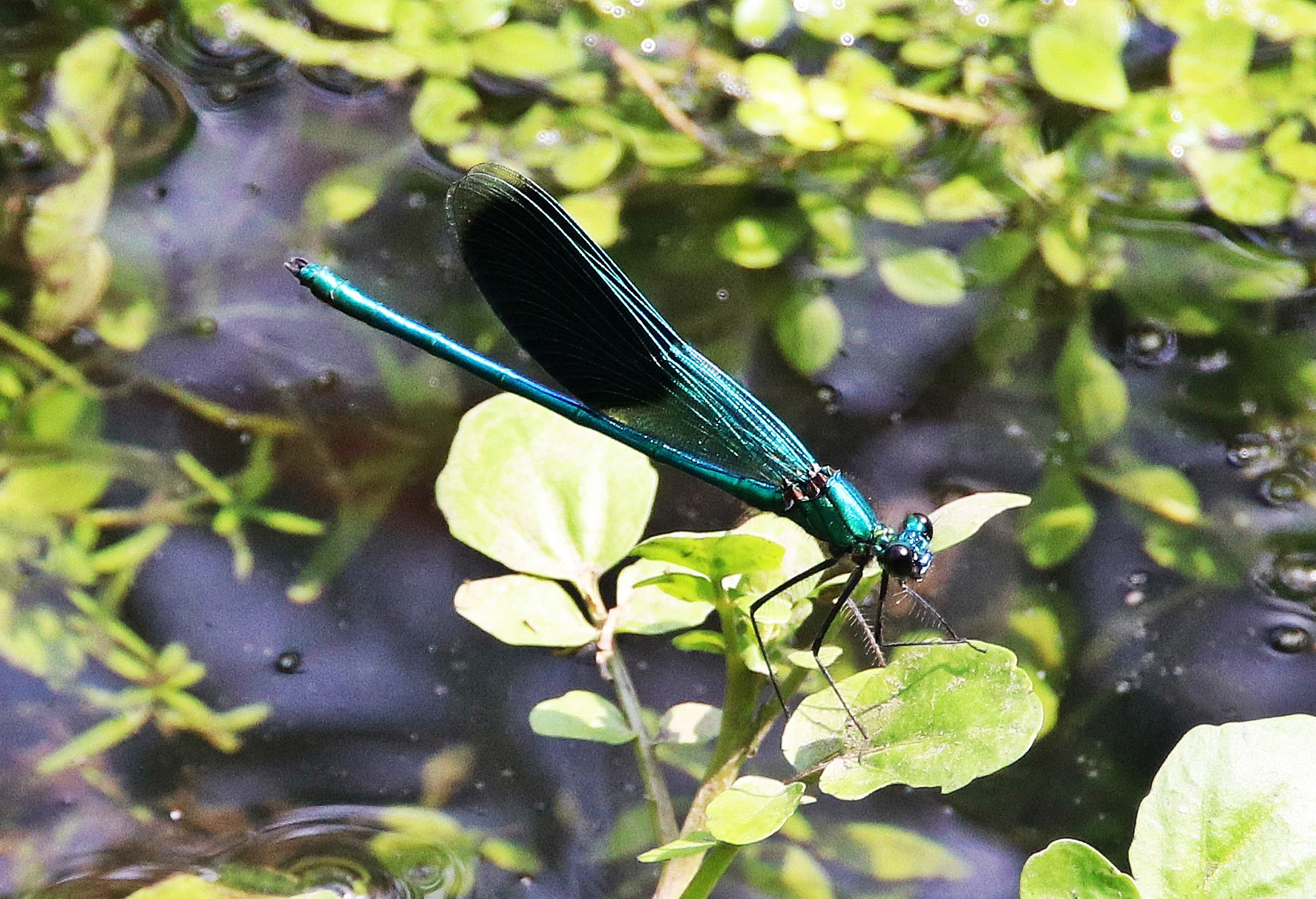
The Banded Demoiselle (Calopteryx splendens) inhabits very sunny, slow-flowing streams with abundant waters edge vegetation. It is thus one of the characteristic species of the "Little Brain", where it occurs in large numbers in areas with low reed growth.
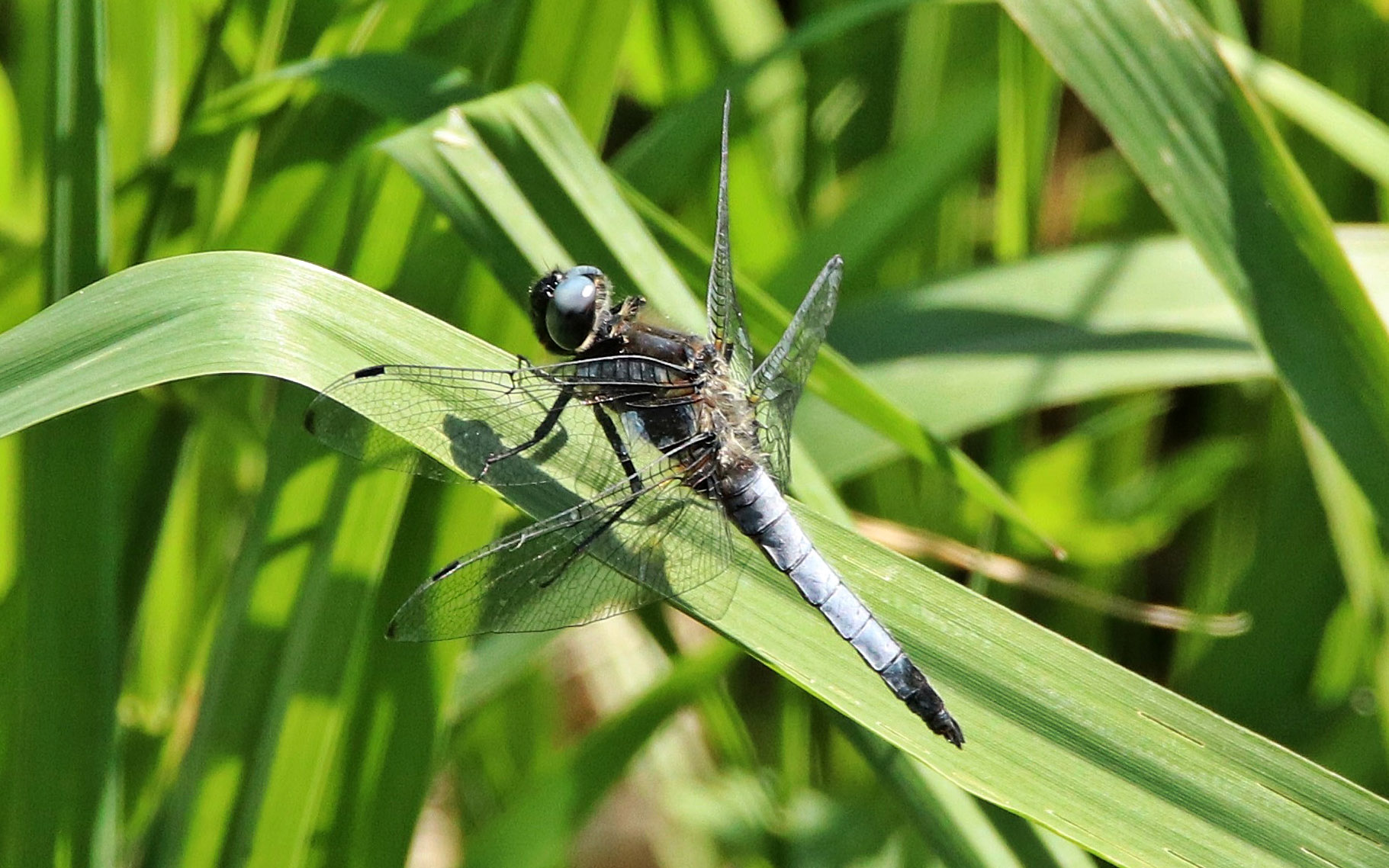
The Scarce chaser (Libellula fulva) is also one of the species that are rare in Saxony-Anhalt. Few individuals could be detected along the Kleine Sülze creek and the quarry lake. During their two-year development phase the larvae are dependent on oxygen-rich water, the flying animals have the eponymous dark spots at the wingtips .
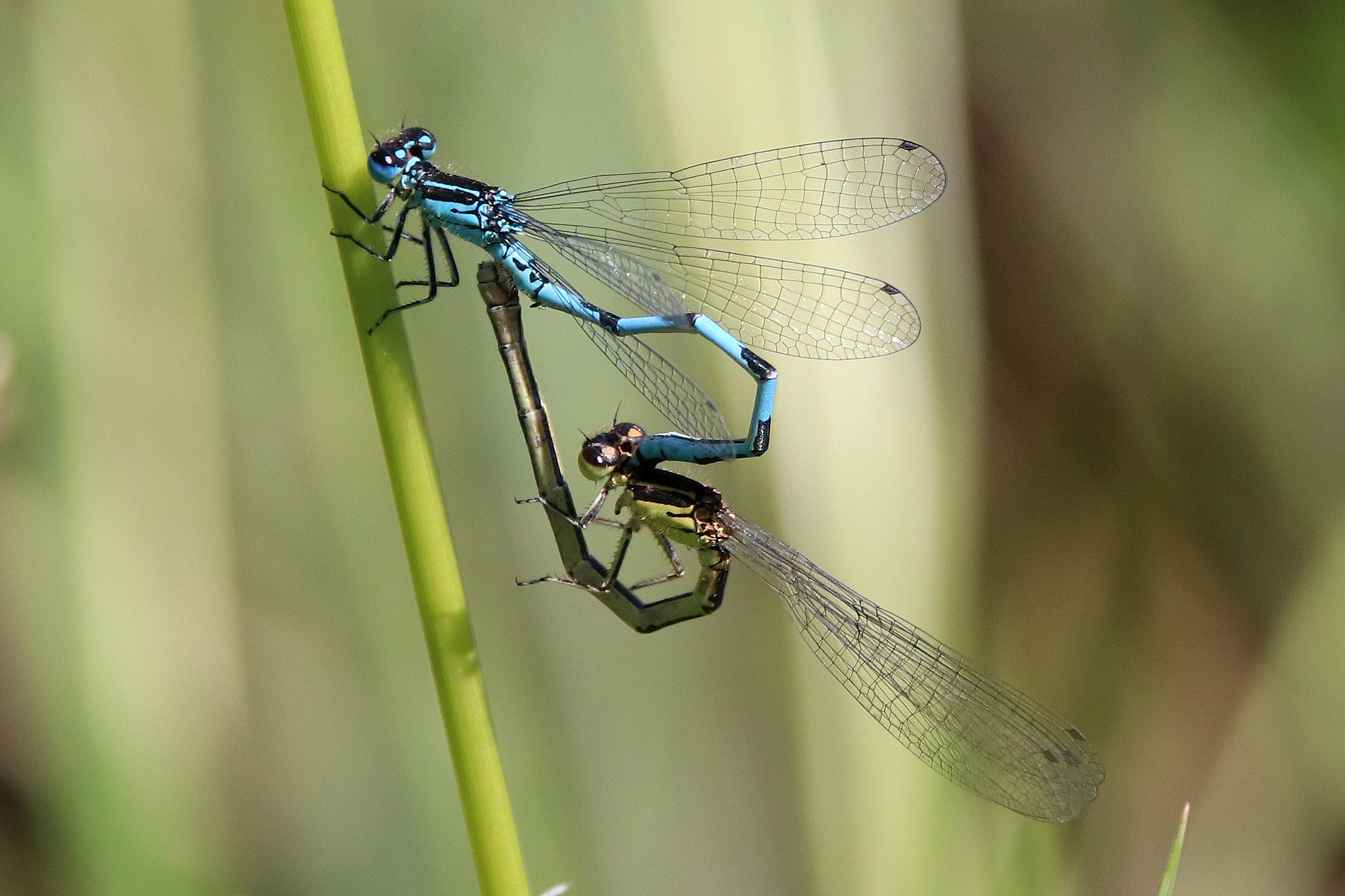
Southern Damselflies (Coenagrion mercuriale) mating on the south bank of the Kleine Sülze creek. The species is rare in Saxony-Anhalt. It inhabits narrow, easy-flowing and oxygen-rich streams that do not freeze in winter. A precondition for the occurrence of this species is also the presence of sufficient water edge vegetation and winter-green underwater plants.
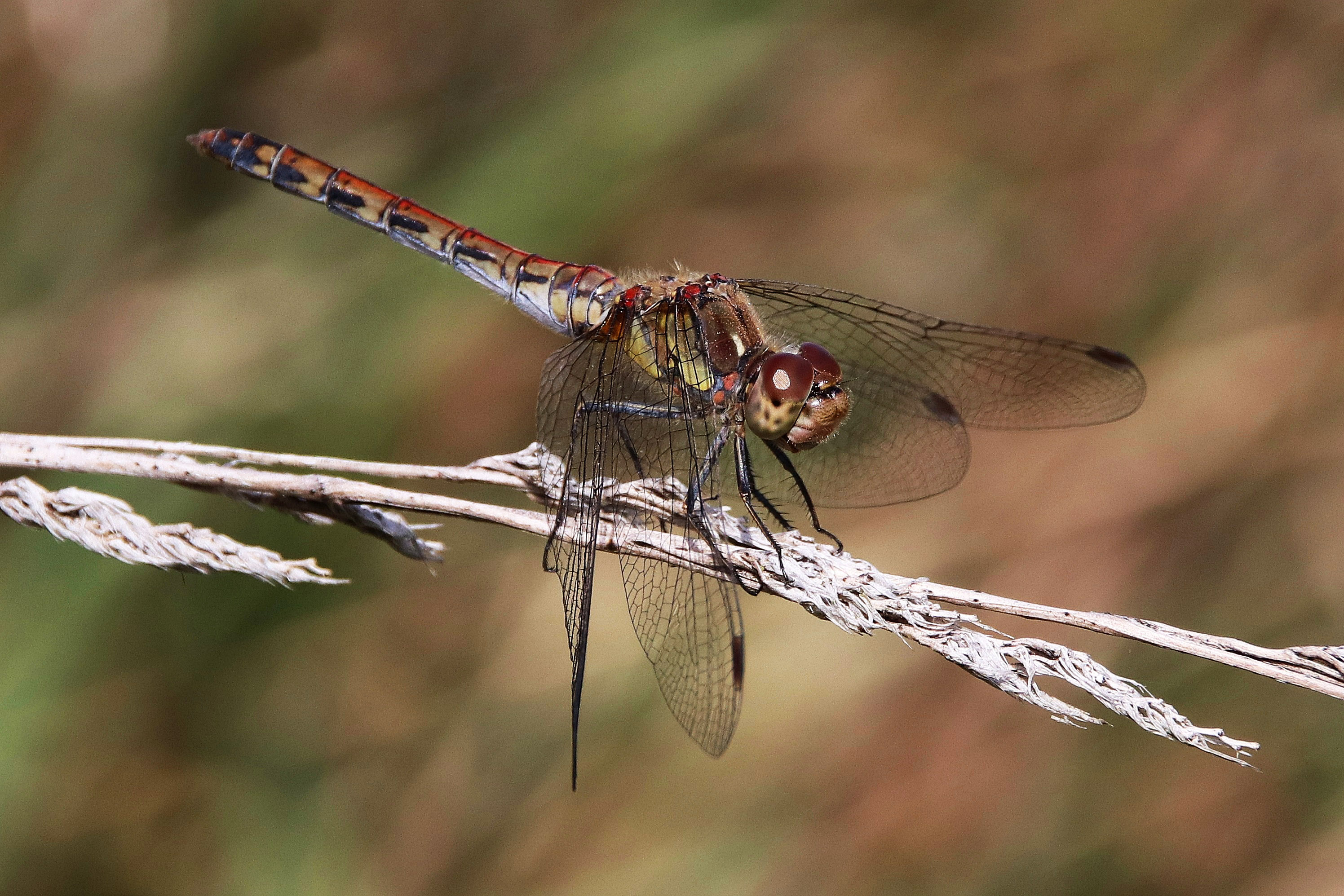
Common Darters (Sympetrum striolatum) are often found far away from the water in dry, wind-sheltered areas. Areas with old, dried up plant populations are often used by common darters as a place from which they can survey their territory and spy on potential prey animals.
Text and Photos: Susen Schiedewitz